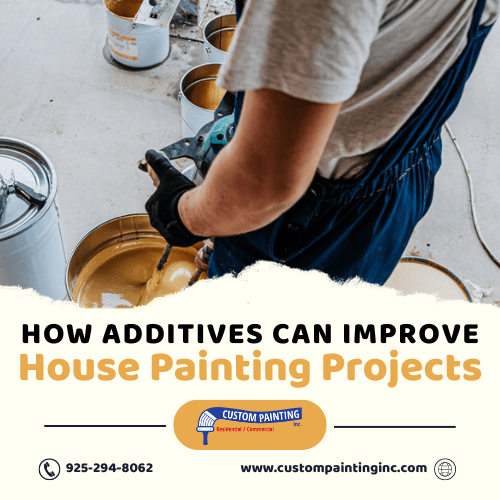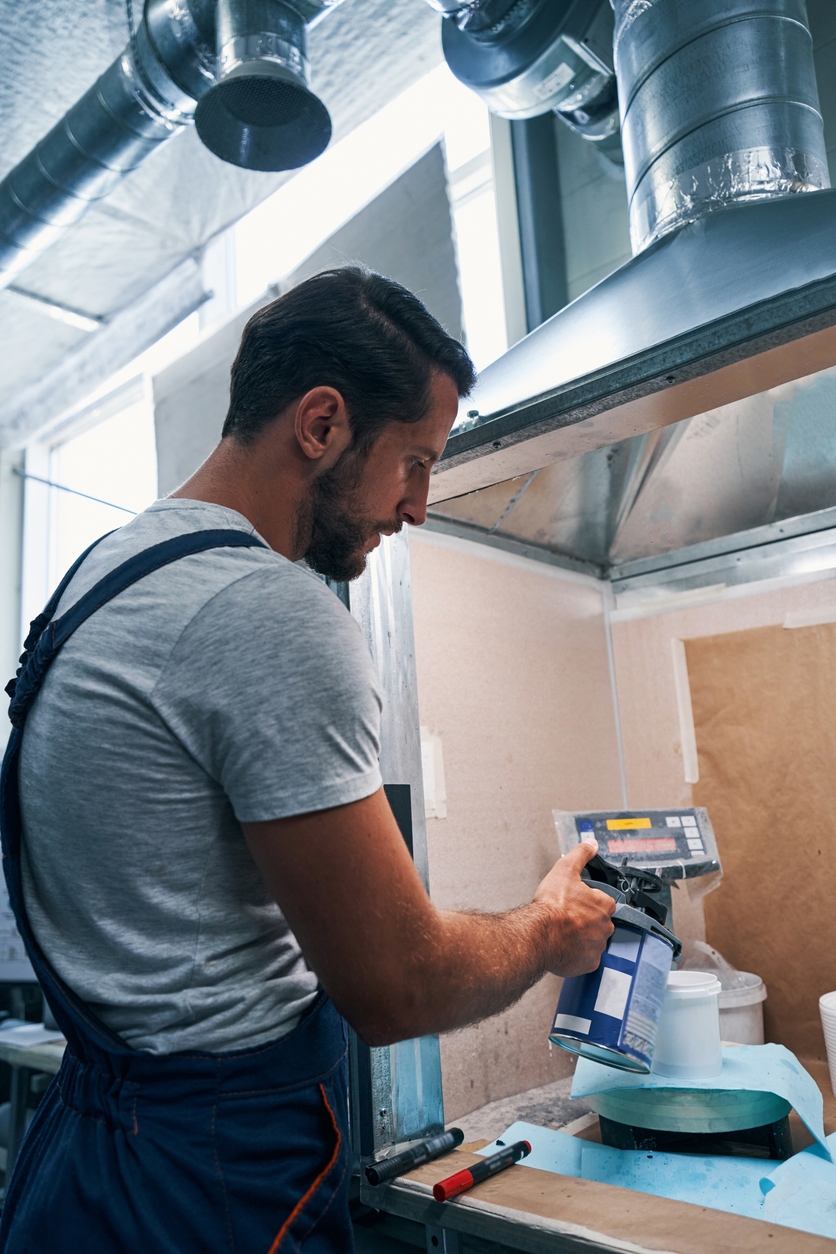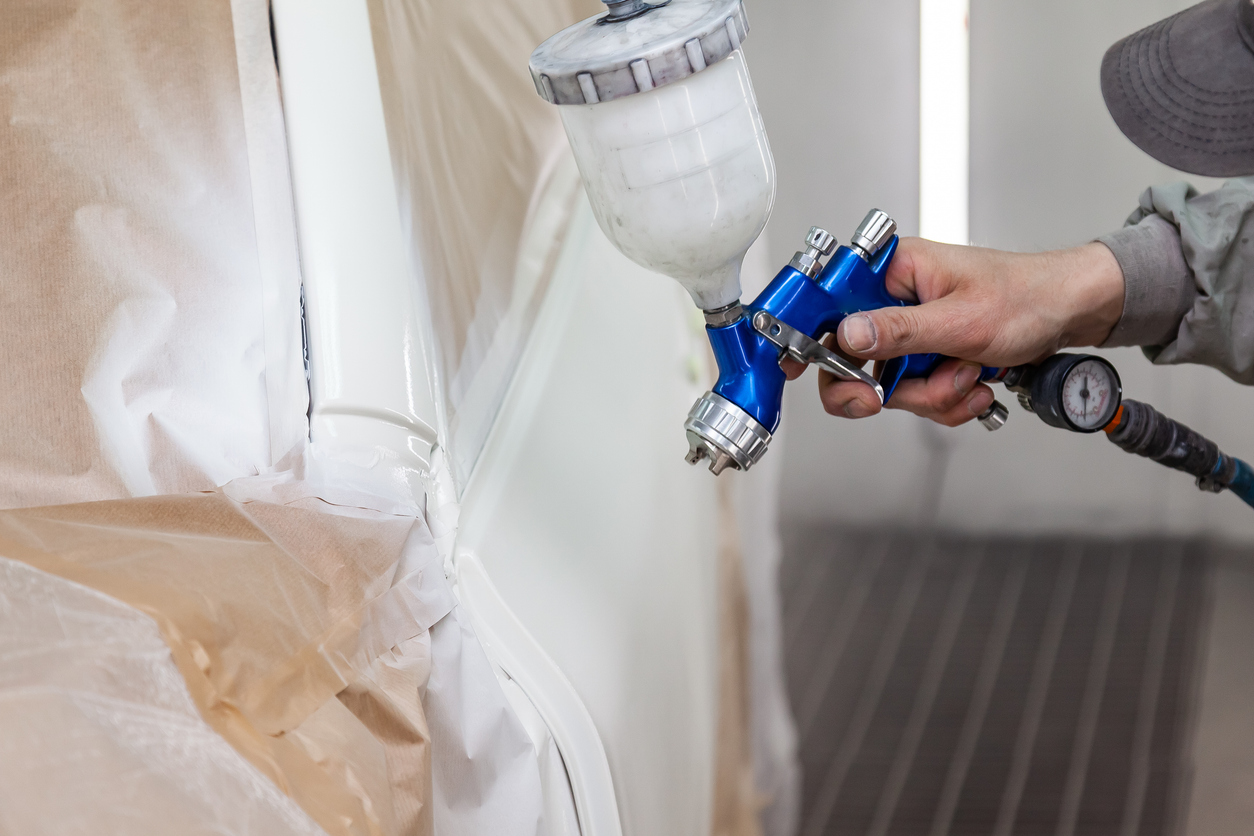House painting is a common home improvement project that can dramatically enhance the appearance and value of a property. Using the right materials and techniques is essential to achieve a professional-looking finish that lasts.
One often overlooked aspect of painting is the use of paint additives. These products can improve the performance and durability of paint, making the job easier and the results better. This article will explain how paint additives can be a valuable tool in your next house painting project.
Understanding Paint Additives
Paint additives are special substances added to paint to enhance its performance and finish. They address various challenges that can arise during painting and help improve the overall quality of the job. Here are some common types of paint additives:
- Thickeners: These additives increase the paint’s viscosity, making it thicker. This helps achieve better coverage and prevents dripping or running.
- Flow Agents: These additives improve the flow of the paint, allowing it to spread more smoothly and evenly. They help eliminate brush marks and provide a more uniform finish.
- Mildewcides: These additives prevent the growth of mold and mildew on painted surfaces. They are especially useful in damp or humid environments where these issues are more common.
- UV Blockers: These additives protect the paint from the harmful effects of ultraviolet (UV) rays. They help prevent fading and deterioration of the paint, extending its life and maintaining its color.
- Anti-Settling Agents: These additives keep the pigments and other components of the paint well-mixed. They prevent settling, ensuring that the paint maintains its consistency and quality throughout the painting process.
Benefits of Using Paint Additives
Using paint additives can bring several benefits to your house painting projects. These advantages can make the process smoother and the results more professional. Here are some key benefits of using paint additives:
Enhanced Durability and Longevity
Additives can significantly increase the durability of paint, making it more resistant to wear and tear. For example, UV blockers protect the paint from sun damage, preventing fading and deterioration over time. This ensures the paint maintains its appearance for longer periods.
Anti-mildew and anti-mold additives help prevent the growth of mold and mildew, which can damage the paint and the underlying surface. By keeping these issues at bay, these additives extend the lifespan of the paint, especially in humid or damp areas.
Improved Application and Finish
Certain additives improve the flow and leveling of paint, making it easier to apply. Flow agents help the paint spread smoothly and evenly, reducing the chances of streaks and uneven patches.
Thickeners play a crucial role in achieving a smooth, even finish by increasing the paint’s viscosity. They prevent the paint from dripping or running, ensuring that brush marks and roller lines are minimized, resulting in a professional-looking finish.
Customized Paint Properties
Paint additives can alter the texture and sheen of the paint. For instance, additives can create specialized finishes such as matte, satin, or glossy, allowing for greater customization to match specific aesthetic preferences.
These additives also help tailor paint properties to different surfaces and conditions. Whether you need paint that adheres better to a rough surface or one that resists moisture, the right additives can make a significant difference.
Cost and Efficiency Benefits
Using paint additives can reduce the number of coats needed to achieve full coverage. This not only saves time but also reduces the amount of paint required, making the project more cost-effective.
Enhanced paint coverage with fewer materials translates to long-term cost savings. Increased durability and efficiency mean you won’t need to repaint as frequently, saving both time and money in the long run.
Health and Environmental Considerations
Some additives reduce the level of volatile organic compounds (VOCs) in paint, making it safer for indoor use. Low-VOC paints are better for indoor air quality and reduce health risks associated with paint fumes.
Eco-friendly and non-toxic additives are also available, providing an environmentally responsible option for painting projects. These additives ensure that your painting activities have minimal negative impact on the environment and human health.
Practical Tips for Using Paint Additives
Using paint additives can enhance your painting projects if done correctly. Here are some practical tips to ensure you get the best results from paint additives:
Choosing the Right Additives for Your Project
Select additives based on the specific needs of your project. For example, if you need better durability, choose UV blockers or anti-mildew agents. For a smoother finish, consider flow agents or thickeners. Research and read product labels to make informed decisions.
Proper Mixing Techniques and Proportions
Proper mixing techniques and proportions are essential when using paint additives to ensure the best results. Here are some key factors to keep in mind:
- Follow Manufacturer’s Instructions: Always read and follow the instructions provided by the additive manufacturer. These guidelines will help you determine the correct amount to use and how to mix it properly.
- Use the Right Tools: Use appropriate mixing tools, such as a paint stirrer or drill attachment, to ensure thorough blending. This helps achieve an even distribution of the additive throughout the paint.
- Measure Accurately: To avoid adding too much or too little, measure the additive carefully. Use measuring cups or syringes for precise quantities.
- Mix Gradually: Add the additive slowly while stirring the paint to avoid clumping or separation. Gradual mixing helps integrate the additive smoothly.
- Stir Thoroughly: Mix the paint and additive thoroughly to ensure even consistency. Stir for several minutes, making sure to scrape the sides and bottom of the container.
- Test Before Use: Before applying the mixed paint to the entire surface, test it on a small area. This ensures the mixture is correct and performs as expected.
Common Mistakes to Avoid
There are common application mistakes that can undermine the effectiveness of paint additives. Avoid these pitfalls to ensure the best results:
- Overuse of Additives: Adding too much can negatively affect the paint’s properties. Follow the manufacturer’s instructions for the correct proportions.
- Skipping the Test Phase: Always test the paint with the additive on a small area first. This helps ensure compatibility and the desired effect before applying it to the entire surface.
- Inadequate Mixing: Failing to mix the paint and additive thoroughly can lead to inconsistent results. Ensure the additive is evenly distributed throughout the paint.
- Ignoring Compatibility: Not all additives work with all types of paint. Check the product labels to ensure the additive is compatible with your paint type.
- Using Additives for the Wrong Purpose: Select additives based on your project’s specific needs. Using the wrong type can result in poor performance and finish.
Conclusion
In conclusion, paint additives offer numerous benefits that can enhance your house painting projects. They increase durability, improve application, and allow for customized paint properties.
By using the right additives, you can achieve professional-quality results with ease. Consider incorporating paint additives into your future projects to make the process smoother and the outcomes more lasting.
For expert advice and professional painting services, contact Custom Painting, Inc. You can reach us at 925-686-0903 or fill out a Contact Form on our website. Let us help you achieve the best results for your next painting project.




